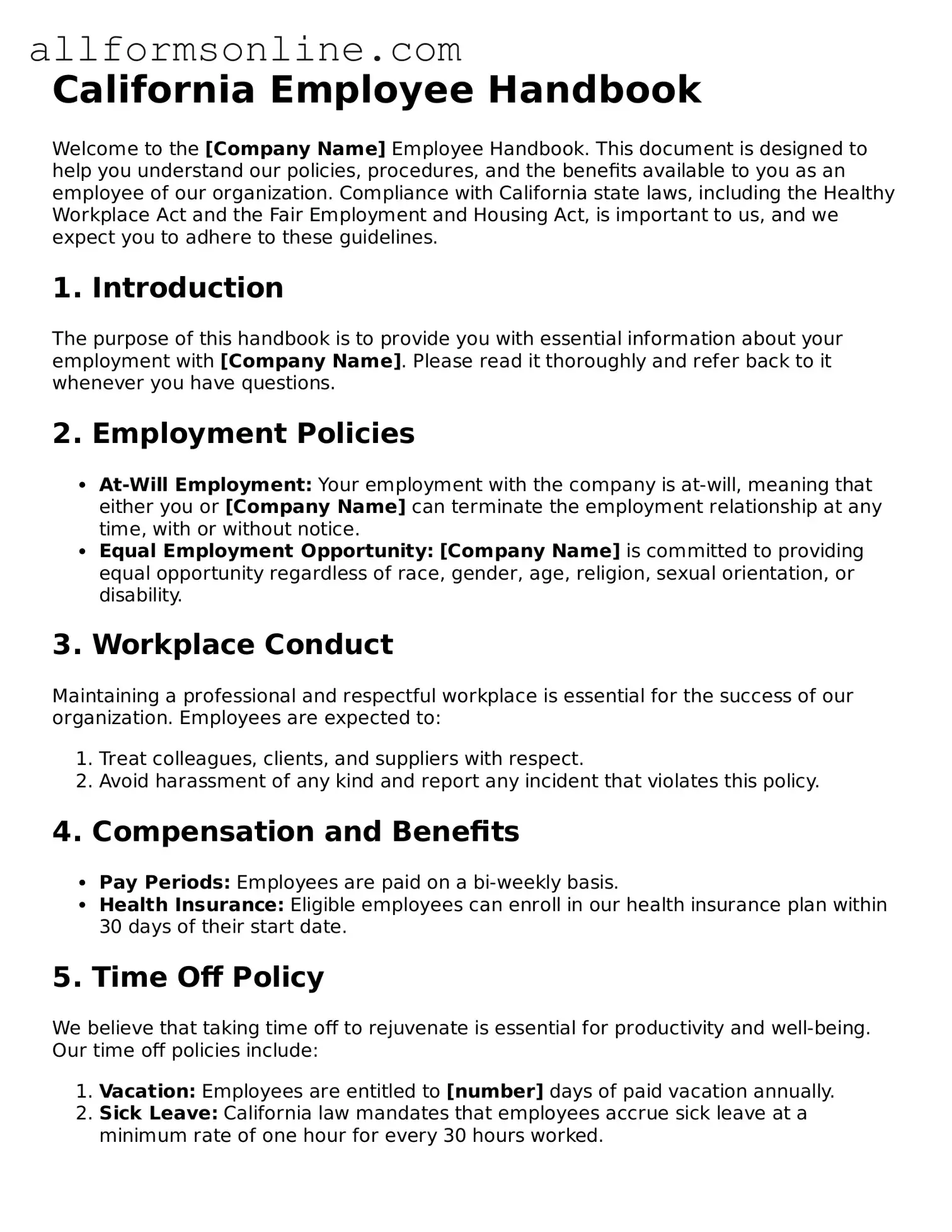What is the purpose of the California Employee Handbook form?
The California Employee Handbook form serves as a guide for both employers and employees. It outlines workplace policies, employee rights, and responsibilities. This document helps ensure that all employees are aware of the company's expectations and the resources available to them. It can also aid in compliance with state labor laws.
Who is required to have an Employee Handbook in California?
While not all employers are legally required to have an Employee Handbook, it is highly recommended for businesses with employees. Having a handbook can help clarify workplace policies and procedures. It is particularly beneficial for companies with multiple employees or those that are subject to specific labor regulations.
What should be included in the Employee Handbook?
An effective Employee Handbook should include sections on workplace policies, employee benefits, code of conduct, anti-discrimination policies, and procedures for reporting grievances. Additionally, it may cover topics such as attendance, leave policies, and disciplinary procedures. Customizing the handbook to reflect the company culture and specific legal obligations is advisable.
How often should the Employee Handbook be updated?
It is important to review and update the Employee Handbook regularly. Changes in state or federal laws, company policies, or business practices may necessitate updates. Employers should consider conducting a review at least annually or whenever significant changes occur within the organization.
What is the best way to distribute the Employee Handbook to employees?
Employers can distribute the Employee Handbook in various ways, including printed copies, digital formats, or through an employee portal. It is essential to ensure that all employees receive the handbook and understand its contents. Acknowledgment of receipt, whether through a signature or electronic confirmation, is recommended to document that employees have been informed.
What should an employee do if they have questions about the Employee Handbook?
If an employee has questions about the Employee Handbook, they should reach out to their supervisor or the human resources department. Open communication is encouraged to clarify any misunderstandings. Employers should be prepared to provide explanations and additional context regarding the policies outlined in the handbook.
